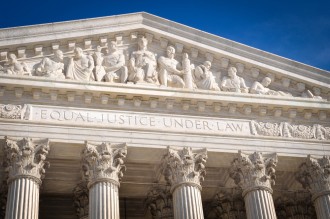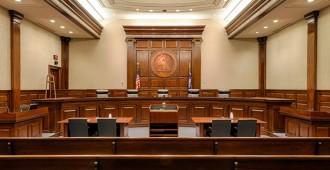
March 2, 2017
Chemistry & Nanotechnology Developments to Watch in 2017
As cases and outcomes make their way into the news this year, we will be watching the following developments closely and sharing them with the IP community.
Secret Sale Activities under the AIA
Helsinn Healthcare S.A. v. Teva Pharm. USA, Inc. (Fed. Cir. Appeal No. 2016-1284) is a pharmaceutical patent infringement case that is predicted to address the extent to which pre-AIA 102 case law regarding on-sale bar activities will apply to post-AIA 102. The question arises out of ambiguous statutory language in AIA 35 U.S.C. 102(a)(1): “[a] person shall be entitled to a patent unless … the claimed invention was patented, described in a printed publication, or in public use, on sale, or otherwise available to the public before the effective filing date of the claimed invention.” (Emphasis added). The outcome will likely depend on statutory interpretation as to whether “otherwise available to the public” modifies “on sale” or instead creates new types of publicly available information. If post-AIA 102(a)(1) is interpreted so that sales must be public, then secret sales (e.g., non-public and confidential sales) would not be covered by 35 U.S.C. 102(a)(1). This interpretation would render many aspects of pre-AIA on-sale bar case law moot.
Pending Legislation Regarding Administrative Agency Deference Could Impact Post-Grant Proceedings
Pending legislation (Regulatory Accountability Act (RAA) of 20171) could eliminate Chevron deference that U.S. courts give to administrative agencies’ formal interpretations of the statutes entrusted to the agencies’ jurisdictions. If the standard of deference changes, this could reshape post-grant proceeding decisions made by the U.S. Patent & Trademark Office (USPTO). For example, Inter Partes Review (IPR) proceedings in front of the USPTO presently use the “broadest reasonable construction” (BRI) standard of claim construction. The Supreme Court recently upheld the USPTO’s use of BRI in IPRs, but this holding was predicated entirely on Chevron deference to the USPTO’s interpretation of the America Invents Act (AIA). Cuozzo Speed Tech. v. Lee, 136 S. Ct. 2131, 2143 (2016). Therefore, if the RAA passes the Senate and is signed by the president, the USPTO’s use of BRI in administrative agency trial procedures enacted in the AIA could be called once again into question. BRI is generally viewed as making it easier for patent challengers to invalidate patents in IPRs, so if the courts determine that the USPTO may not use BRI in IPRs, this could slow the rate at which the USPTO invalidates claims in IPRs.
Final Institution Decisions for Inter Partes Review
In Achates Publishing v. Apple Inc., 803 F.3d 652 (Fed. Cir. 2015) the Federal Circuit held that 35 U.S.C. §314(d) prohibits it from reviewing a PTAB’s decision to initiate IPR proceedings based on its assessment of the time-bar of 35 U.S.C. §315(b), even if such assessment is reconsidered during the merits phase of proceedings and restated as part of the PTAB’s final written decision. However, on January 4, 2017, in Wi-Fi One, LLC v. Broadcom Corp., the Federal Circuit agreed to consider en banc the interpretation of, and interplay between, 35 U.S.C. § 314(d) (the “No Appeal” provision) and 35 U.S.C. §315(b) (statute of limitations for Inter Partes Review proceedings). More specifically, the Federal Circuit will consider whether it should overrule Achates and allow a patent owner to challenge the USPTO’s determination that the petitioner satisfied the timeliness requirement of 35 U.S.C. § 315(b) governing the filing of petitions for Inter Partes Review.
SCOTUS to Weigh In on Two Biosimilar Provisions of the BPCIA
The Supreme Court is scheduled to hear oral arguments on April 26, 2017, that will have an impact on the detailed process for addressing patent disputes surrounding biosimilar products, as laid out in 42 U.S.C. § 262(l). Both Amgen and Sandoz filed Petitions to the Supreme Court from the July 2015 Federal Circuit ruling in Amgen Inc. v. Sandoz Inc., 794 F.3d 1347 (Fed. Cir. 2015). The first issue involves the commercial marketing notice provision. Specifically, does a Biosimilar Applicant have to wait to give commercial marketing notice to the Reference Product Sponsor (RPS) until after the FDA has licensed the product? If so, this could give the RPS an extra 180 days of “exclusivity.” The second issue concerns whether a Biosimilar Applicant is required by the BPCIA to provide the RPS with a copy of its biologics license application and related manufacturing information.
[1] The U.S. House of Representatives passed the Regulatory Accountability Act (RAA) of 2017 on 11 January 2017. The bill has now moved on to the Senate. The Senate’s docket is quite full with confirmation hearings for the foreseeable future, and it is not clear that this bill will be a high priority for the limited time that the Senate has to give to non-essential legislation.



































